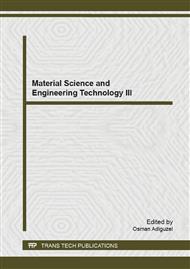p.423
p.431
p.438
p.442
p.446
p.453
p.459
p.463
p.467
The Simulation of Laser Cleaning of Magnetic Head with Different Temporal Pulses
Abstract:
Nowadays, hard disk drives (HDD) technology are being developed continuously in order to increase the capacity, and reduce the size of HDD to meet user requirements. To increase the capacity which is equivalent to increasing read/write ability, the flying clearance must be reduced. Current new HDD models show that the fly height is lower than 0.3 μm. If the height of a particle or contamination is higher than 0.3 μm, the magnetic head will scratch the magnetic disk surface. However the process of cleaning in the HDD industry cannot remove particles with size smaller than 0.3 μm [1]. Therefore laser cleaning is selected first because this method can remove small particles [2]. and it does not damage the magnetic head. This research compares the range of temperature needed for cleaning the magnetic head between two types of heat source’s profile. The technique used is the heat transfer by finite element: FEM[3]. This technique provides an important factor of the laser cleaning method that increases the efficiency of particle removal. It is also a non-destructive method for cleaning the surface of the magnetic head slider.
Info:
Periodical:
Pages:
446-452
Citation:
Online since:
April 2015
Keywords:
Price:
Сopyright:
© 2015 Trans Tech Publications Ltd. All Rights Reserved
Share:
Citation:


